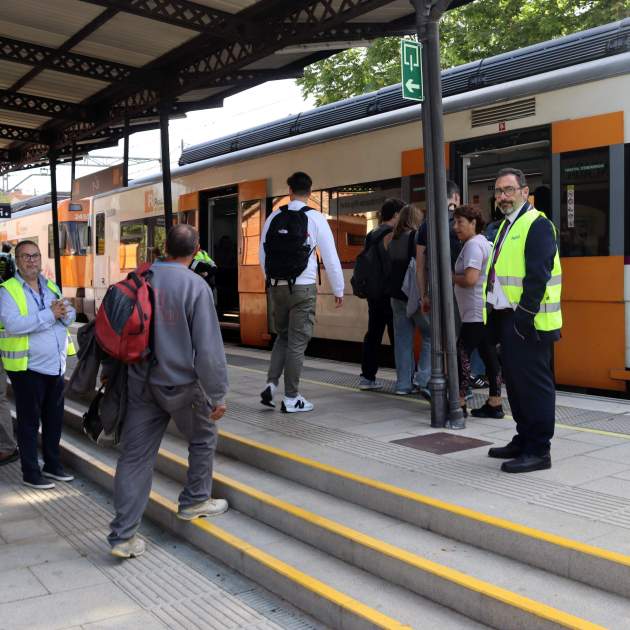As Catalan commuters grapple with a descent into major transport chaos following Sunday's failures in the Rodalies rail network, the train operator Renfe and infrastructure manager Adif have this Monday afternoon announced a new transport plan to be implemented from Tuesday. The programme has been devised together by the Catalan government, the Barcelona city council and the Mossos d'Esquadra police, and has taken into account all available public transport to cope as effectively as possible with the ongoing rail problems that began suddenly on Sunday. The plan will be modified as the operational capacity of trains recovers, although they will try to make this as stable as possible for the next two months, the time that the Spanish transport ministry estimates it will take to repair all lines. The new schedule is a consequence of the effects caused to the entire Rodalies network following a copper cable theft at the Montcada Bifurcació station on Sunday, which then cascaded into a number of fires and failures in different parts of the network. The initial problems struck the rail network in the middle of Catalonia's May 12th election day.
Renfe's plan for commuters for this Tuesday, in detail
At a press conference held this Monday, the Spanish transport minister, Óscar Puente, explained that the circulation of the Rodalies R1 line will be restored on Tuesday, which will carry out its usual service (from l'Hospitalet de Llobregat to Maçanet - Massanes). The R2 will also resume regular traffic: from Castelldefels to Granollers Centre; the R2 North from the Airport to Maçanet - Massanes, and the R2 South from Barcelona Estació de França to Sant Vicenç de Calders.
On the other hand, the R3, which connects Hospitalet de Llobregat with Puigcerdà, will only have a rail service between Puigcerdà and Montcada Ripollet every half hour in both directions. From Montcada Ripollet, an alternative road service will be enabled to Fabra i Puig, in Barcelona, where travelers can continue with Metro Line 1. Users will also be able to use stations of other lines in towns served by both.
On the R4, which usually connects Sant Vicenç de Calders with Manresa, there will only be two trains per hour each way between L'Hospitalet and Manresa, and four trains per hour each way between L'Hospitalet de Llobregat and Sant Vicenç de Calders.
Users of the R7, which normally goes from Fabra i Puig to Cerdanyola Universitat, will be able to travel to the UAB by combining the train with buses. They also have the alternative Bus Express 3. The R8, which goes from Martorell Central to Granollers Centre, remains unaffected.
The regular RG1 train service (Hospitalet de Llobregat - Figueres/Portbou) and R11 (Barcelona Sants - Portbou) is also maintained. On the other hand, the R12 (l'Hospitalet - Lleida) will have an alternative road service from Manresa to Calaf, from where it will connect to the rail service. According to Renfe, the southern regions will not be affected. As for the Intercity trains that run on conventional gauge, they will perform the service with double traction (that is, engines at head and tail) to avoid empty train movements in the Barcelona area.
The relocation of material and personnel during the network repair work may cause specific effects on the planned reorganization of the service. To inform passengers and guide them, the company has requested 46 new staff who will join the information and customer service staff at stations.
Monday, first working day after major rail failure
The frst working day with the functioning of the Rodalies rail network completely in doubt after the copper cable theft this Sunday at the Montcada Bifurcació station caused a day of absolute chaos on all rail lines in Catalonia. Renfe and Adif met on Sunday with the Barcelona city council, the Generalitat and the Mossos d'Esquadra police to coordinate so that commuters could get to their destinations in the best possible conditions. On Monday morning, the R1, RG1, R4 Nord, R4 Sud, R3 and R7 train lines were affected. On those routes, trains either were not running or were only running in some time slots, and with alternative road transport being employed for sections of lines that were closed. Extra Metro services were scheduled and more assistance staff rostered. Many users expressed their outrage on social media.
